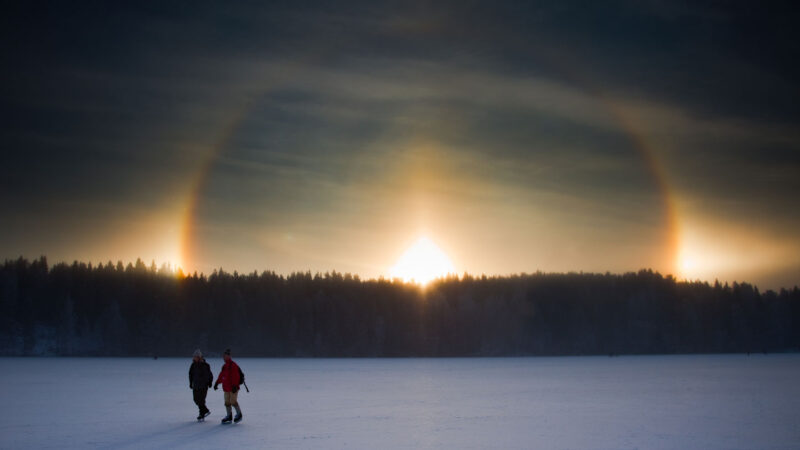Sundog (noun, Suhn Dahg)
Sundogs are bright flares of light that can appear on either side of the sun in the sky. They form when incoming sunlight bends, or refracts off tiny, prism-shaped ice crystals in the atmosphere.
Because of the angles inside these six-sided ice crystals, sundogs appear 22 degrees away from the sun in the sky. Sundogs can appear alone, as a pair on either side of the sun or on a halo that circles the sun. They can also occur at night when the moon is bright. These are known as moon dogs.
Sundogs often contain a colorful, rainbowlike streak. That’s because the sun’s white light is made up of many different wavelengths, or colors of light. And those light waves bend at slightly different angles off ice crystals in the air. This separates incoming sunlight into the colors of the rainbow. But unlike a rainbow, which always has red on the outer edge, red appears on the inside of the sundog, closest to the sun. Blue appears on the outer edge of a sundog, farthest from the sun.
Sundogs appear only when the sun is fairly low in the sky. When the sun climbs too high, sunlight doesn’t hit the ice crystals at the right angles. Light can’t refract in a way we can see, so sundogs disappear. Sundogs are most common at cold temperatures, but they can occur when it isn’t freezing out. They can appear anywhere on Earth, as long as there are ice crystals in the atmosphere. This often happens with wispy, high-flying cirrostratus clouds. The appearance of those clouds can indicate that rain is on the way.
In a sentence
When people spot sundogs or moon dogs, there is a good chance that precipitation will fall in the next 24 hours.
Check out the full list of Scientists Say.




